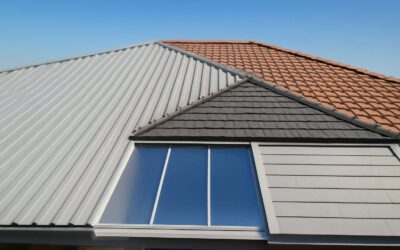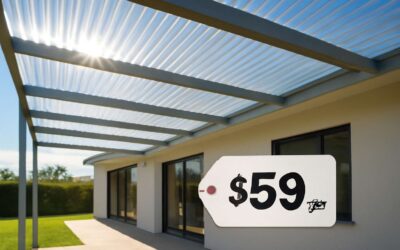Polycarbonate roof sheeting is becoming a popular choice for many different types of roofing projects, including awnings, pergolas, verandahs and greenhouses. It is much stronger than glass and also more flexible. It is available in a variety of colors, textures and thicknesses. The material is also more cost-effective and durable than glass, and can withstand various conditions such as harsh weather, heat and sunlight.
There are several benefits to using polycarbonate over glass, and it can also be used in conjunction with other materials such as aluminium, PVC or timber. These sheets are also very lightweight, making them easy to handle and install. They also don’t require any unique tools, and they can be cut and drilled without producing toxic or harmful shards. This makes them a great roofing solution for people who want to do their own DIY project.
Unlike glass, polycarbonate can withstand high temperatures and maintain rigidity even at above 140 degrees Celsius. It is also malleable and tough, and it is extremely resistant to impact damage. These characteristics make it a safe and strong alternative to other materials, such as fiberglass, in applications that require a more durable, long-lasting roof.
One of the main advantages of using polycarbonate is its UV protection. These plastic sheets have an inner layer that prevents the penetration of harmful UV rays, which can cause sunburns and skin cancer. This property, along with the fact that the sheets are easy to install and inexpensive, has made them a favorite among homeowners, commercial businesses, and contractors alike.
Before starting any project that uses polycarbonate, it is important to understand the proper installation procedures. This will ensure that the sheets are secured, level, and free of any defects. To begin, gather all necessary tools and materials. This should include the polycarbonate sheets, aluminium profiles, screws, drills, saw, tape measure and silicone sealant. In addition to this, it is essential to create a sturdy supporting structure that is designed to support the weight of the sheets and is in accordance with the installation requirements.
Once the project is complete, inspect the finished product to be sure it meets all specifications and is functional. Then, test for light transmission and weather resistance. If any problems are detected, correct the issue by applying the necessary fixes and re-inspecting the structure. Lastly, it is essential to follow the manufacturer’s instructions and specifications when installing polycarbonate sheets. Failure to do so may void the warranty and lead to costly repairs or replacements.
Polycarbonate sheets can be installed in a few simple steps. First, prepare the surface by removing all debris and dirt. Next, lay the sheets on the supporting structure, making sure they are properly aligned and fitted within the profiles. Finally, fasten the sheets with the appropriate screws and washers. Afterward, apply the silicone sealant to prevent water leakage and enhance the weatherproofing properties of the polycarbonate. Finally, trim and finish the edges of the sheets to remove any excess or protruding areas.



0 Comments